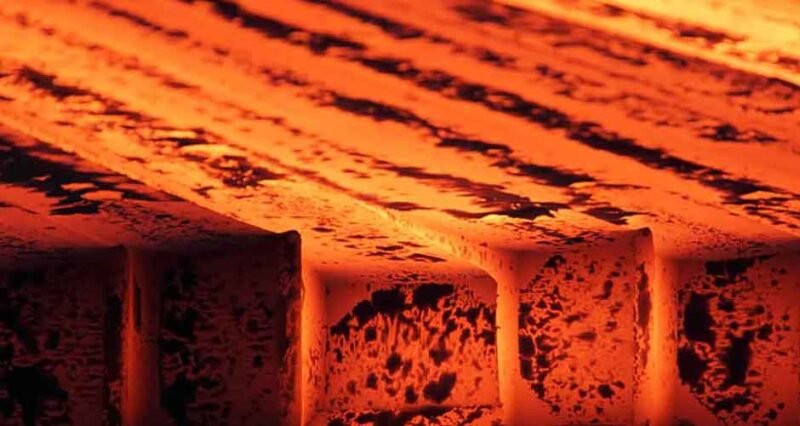
Heat treating is a process used to manipulate the physical and chemical properties of metals and alloys.
When done correctly, it can bring about remarkable improvements in the characteristics of these materials, including strength, ductility or malleability, machinability, wear resistance, heat transfer capabilities, and other desired qualities.
Despite its many advantages, however, there are several challenges that need to be overcome when heat treating metals or alloys.
In this blog post, we will explore some common pitfalls associated with heat treating as well as strategies that can help you maximize your success with the process.
Challenges of Heat Treating Metals and Alloys
Heat treating metals and alloys is a crucial process in the manufacturing industry, where these materials are exposed to high temperatures to improve their properties such as hardness and durability.
Although it is a reliable technique in enhancing the quality of metals, it is not without its challenges.
One of the foremost challenges is that different metals require different treatments, and each treatment requires specific equipment and expertise.
Additionally, the heating and cooling rates must be tailored to each material, which can be a time-consuming process that requires a high level of precision.
Another challenge in heat treating is ensuring that the finished product is consistent in quality and meets the required specifications.
Despite these challenges, heat treating remains an essential process in the manufacturing industry, and experts work diligently to overcome these hurdles and provide high-quality products.
Understanding the Impact of Temperature on Metal Performance
Metal performance is dependent on a number of factors, but one that cannot be ignored is temperature. Any change in temperature can have a profound effect on the properties of metal, and understanding these effects is crucial to ensuring optimal performance.
At higher temperatures, metals can become softer and weaker, while the opposite may be true at colder temperatures. Additionally, changes in temperature can cause thermal expansion or contraction, which can create unwanted stresses and strains on metal structures.
As such, it’s important to carefully consider the impact of temperature on metal performance, both during the design phase and throughout the operational lifetime of any metal component.
How to Maximize Metal Durability During Heat Treating
When it comes to heat treating, maximizing metal durability is crucial to ensuring that it can withstand the rigors of its intended application. To achieve this, it is important to carefully control the heat treatment process.
The key is to heat the metal to its critical temperature and then cool it down quickly, using oil or water quenching. However, this process must be carefully monitored to avoid rapid cooling, which can cause excessive hardness or cracking of the metal.
Additionally, the choice of the proper alloy and composition for the specific intended use is critical to ensuring optimal durability. By following these guidelines, metal durability can be maximized during heat treating, resulting in a stronger and more reliable end product.
Benefits of Computer-Controlled Monitoring in Heat Treating
Computer-controlled monitoring systems have greatly improved the quality and efficiency of heat treating. These systems provide numerous benefits that can’t be matched by traditional manual monitoring.
By utilizing sensors and automated controls, computer systems are able to pinpoint and alleviate imbalances in temperature, ensuring that the process runs smoothly and the heat is distributed evenly throughout.
This leads to a significant reduction in the number of defects and overall waste, resulting in cost savings and increased product yield.
Furthermore, computer-controlled monitoring allows for better data tracking and analysis, allowing heat treatment professionals to make more informed decisions and adjustments.
Overall, computer-controlled monitoring has revolutionized the field of heat treating, providing a level of precision and control that was previously unthinkable.
Strategies for Ensuring Quality and Consistent Results When Heat Treating Metals and Alloys
Achieving quality and consistent results when heat treating metals and alloys requires a careful approach and a deep understanding of the materials being treated. One of the key strategies is to establish rigorous standards for monitoring and controlling the heating and cooling processes.
This includes carefully selecting the appropriate temperatures and time durations for each process, as well as using advanced equipment and software to monitor temperatures and ensure that they remain within the desired range.
It is also essential to use high-quality materials and to follow best practices for handling and processing them at every stage of the manufacturing process.
With these strategies in place, it is possible to achieve reliable and consistent results when heat treating metals and alloys, while also ensuring the highest levels of quality and accuracy in the final product.
In conclusion, heat treating metals and alloys is a challenging but necessary process for ensuring maximum performance and durability. With each successful result treasured as part of a company’s portfolio, it is important to remain aware of best practices for heat treating that allow for optimal outcomes and long-term growth.

